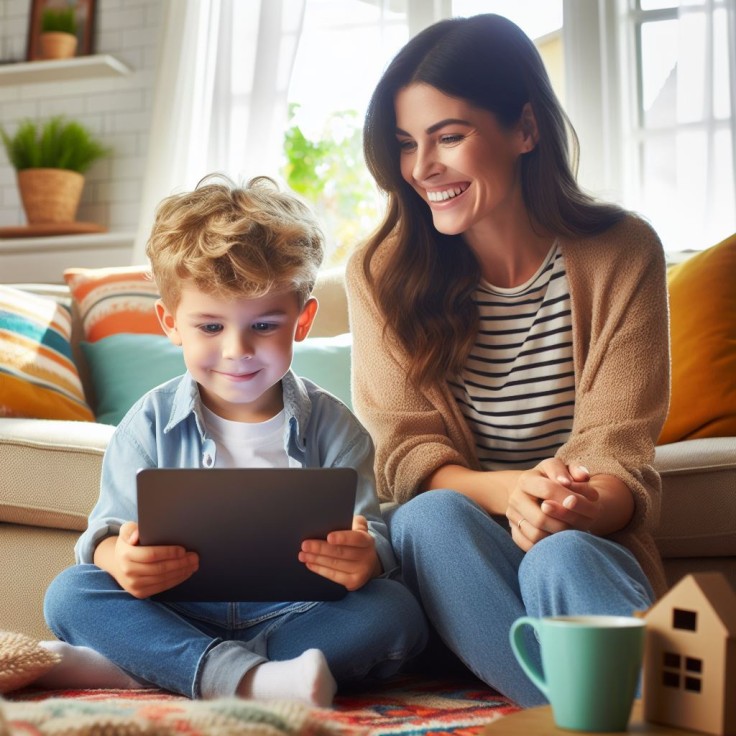
We often see kids carrying an iPad with them even when they're outside the house. This is common because using gadgets help them calm down and reduce boredom. For parents, it's your way to keep the kids occupied while you're busy doing chores or working.
But for sure, many parents are aware of the negative impact of iPads. So, we won't be discussing that here. Instead, we will talk about how your kids can benefit from it. We will also look into the advice of a psychologist on how you can manage screen time for your children.
How Kids Can Benefit From Using iPads
With its dual benefits of providing youngsters with essential education and entertainment, the iPad has become a household staple in today's tech-obsessed world. The rise of the "iPad Kid" is a fascinating phenomenon that shows how kids' play, learning, and interactions with the outside world are being altered by these chic devices.
The Educational Revolution
Because of the iPad's capacity to make learning engaging and dynamic, educators and parents have welcomed the device. With so many kid-focused educational apps available, the iPad has transformed academic subjects into captivating journeys. The iPad has completely changed the way children learn, making it more engaging and accessible. From interactive storybooks to arithmetic games that feel like play.
Creativity Unleashed
Young makers and artists have also turned to the iPad as a canvas. Kids may now express their creativity in previously unthinkable ways with the help of multimedia tools, drawing apps, and music apps. The iPad Kid explores their artistic abilities and uses technology to express themselves; they are not merely a passive consumer but an active participant in the creative process.
Parental Controls and Moderation
Although the iPad has many advantages, it must be used responsibly. To guarantee that children have a secure and suitable digital experience, parental controls and content moderation measures are implemented. With the knowledge that their iPad Child is safely navigating the digital world thanks to these capabilities, parents can relax.
Screen Time Balance
Finding the ideal balance between screen time and other activities is a struggle for parents. A well-rounded childhood requires promoting outdoor play, reading actual literature, and participating in social interactions. The iPad Kid phenomenon highlights the importance of integrating technology into children's life with consideration.
Future Innovators
It's expected that the iPad Kid generation will have a distinct viewpoint on the world when they get older. These young people, whose everyday lives have been seamlessly infused with technology, are destined to be the next wave of innovators, influencing the future with their inventive thinking and digital fluency.
Passive Screen Time: It's Negative Effect to Children
A study from the Australasian Journal of Early Childhood underscores the significance of distinguishing between active and passive screen time when assessing the effects of technology on children.
Passive screen time, involving sedentary activities or media consumption like watching TV, YouTube, or scrolling through social media, can have detrimental effects. Excessive use of passive screen time has been linked to issues such as childhood obesity, attentional problems, and challenges in cognitive development and language skills.
Children engaged in passive screen time often lead sedentary lifestyles, contributing to health concerns such as obesity. Lack of physical activity and prolonged screen use may adversely affect a child's overall well-being and physical fitness.
Excessive exposure to passive screen time may lead to attentional problems and hinder cognitive development. The constant stimulation from screen-based media can disrupt the natural cognitive processes necessary for effective learning and problem-solving.
How to Manage Your Child's Screen Time Effectively
Navigating the challenges of parenting in the digital age requires an empathetic, understanding, and patient approach to regulating your child's screen time. Research underscores the benefits of initiating screen time interventions with a "screen-free week," revealing that many parents discovered increased happiness in their children during shared activities compared to screen time. This can be transformative starting point for parents striving to strike a balance in their children's technology usage, with long-lasting effects. Here's the advice from Mark Travers, Ph.D., is an American psychologist.
1. Screen-Free Week Reflections
Begin by reflecting on insights gained during the screen-free week. Observe the impact of reduced screen time on your child's behavior, mood, and family dynamics. Based on these observations, establish age-appropriate limits for screen time, considering your child's developmental needs.
2. Establish Clear Boundaries
Introduce unsupervised screen time no earlier than age two, prioritizing high-quality educational content. Toddlers benefit more from hands-on activities for developmental milestones. Set age-appropriate daily screen time limits and use parental controls to ensure content aligns with values and age suitability, fostering responsible screen habits.
3. Lead by Example
Model healthy screen habits by demonstrating limited and purposeful screen use. Actively engage in non-screen activities to highlight the importance of balance. Show your kids that you can actually spend time doing other things without using your smartphone, computer or tablet.
4. Engage in Joint Activities
Encourage face-to-face interaction through activities like board games, outdoor play, or family outings. Use technology with your child when necessary, modeling healthy screen time use while spending quality time together to strengthen the parent-child bond.
5. Empower Your Child to Limit Screen Time
Involve your child in managing their screen time by teaching them to set timers for daily sessions. This imparts time-management skills and encourages self-assessment for transitioning to different activities, fostering responsibility and autonomy.
6. Create Screen-Free Zones
Designate specific areas in your home where screens are not allowed, establishing a balance between tech and non-tech environments. This physical boundary promotes diverse activities and helps maintain a healthy relationship with technology.
With these tips above, you will surely be able to help your kids reduce screen time while letting them enjoy its benefits. It's important to strike a balance even in iPad use. Which of the above things are you doing to manage your kid's gadget use?